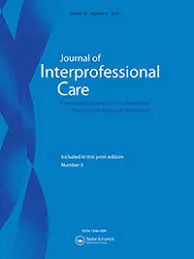The Use of Clinical Systems to Improve Outcomes and Efficiencies Essay
Example Paper 2 on Medication Errors
Medication errors are considered one of the most common errors in clinical settings. The barcode medication administration (BCMA) technology has been advocated as an effective system to reduce medication errors.
However, controversial researchers argue that BCMA implementation does not necessarily eliminate administration or dispensing errors, and the system is only as good as the healthcare professionals using them. A gap exists in understanding whether the BCMA reduces administration errors, reducing patient harm.
The following is an annotated bibliography of four articles that examine the impact of BCMA on medication errors and reducing adverse drug effects.
Annotated Bibliography
Barakat, S., & Franklin, B. D. (2020). An evaluation of barcode patient and medication scanning on nursing workflow at a UK teaching hospital. Pharmacy, 8(3), 148. https://doi.org/10.3390/pharmacy8030148
Barakat, S., & Franklin (2020) stated that while BCMA is said to reduce medication error, there is missing data on its effect on nursing workflow. Thus, they researched to investigate BCMA’s impact on nursing activity. Data on nursing activity was conducted before and after BCMA implementation in two surgical wards with 24 beds.
Dispensed medication was stored in patient lockers, and stock medication was stored in lockable cabinets. BCMA was implemented in one ward, and the second one became a control group. Researchers found that the timeliness of medication administration did not improve with the implementation of BCMA. BCMA yielded active, positive patient identification, whereby all 43 patients’ identification was checked before drug administration, unlike in the non-BCMA ward, where only 74% were verified.

BCMA enabled positive medication verification, identifying 0.4% of medication errors. Efficiencies noted from the implementation of the BCMA included active, positive patient and medication identification. For instance, even if the patient was in ICU, the nurses could easily identify them to administer the correct medication.
This helped to reduce medication errors. Lessons learned from the article are that BCMA implementation may not decrease drug rotation but increases safety by allowing medication and patient verification. For instance, nurses may take the same amount of time to either identify patients manually using the BCMA. However, nurses’ chances of verifying every patient are low in non-BCMA wards.
Othman, E. H., & Darawad, M. W. (2020). Nurses’ compliance with barcode medication administration technology. CIN: Computers, Informatics, Nursing, 38(5), 256- 262. https://doi.org/10.1097/cin.0000000000000591
The research aimed to assess the significance of using barcode medication administration technology on medication errors in the in-patient setting. The BCMA technology was implemented in fifty in-patient nursing units between September 2008 to 0ctober 2010. During the study, 500,000 medications were dispensed every month.
Medication errors decreased by 17% during the barcode system implementation. Additionally, reporting of non-medication events increased by 20%. Errors reduced from 37.25 to 21.03 per 100,000 administered medication after the implementation. The researchers also measured adherence to BCMA implementation in nursing. Results showed that adherence was at 70% during implementation, but by post-implementation, adherence was at 94.4%.
The implementation of the BCMA was efficient and reduced medication errors. For instance, nurses could identify the right patient and the right medication, hence eliminating bedside errors. This reduced the medication harm caused to patients. As the medication errors reduced, nurses’ compliance with BCMA also increased. Lessons learned from the article are that the use of technology in the nursing process helps in eliminating medication errors.
By implementing BCMA, nurses follow the principle of the five rights of medication, which include the right patient, right dosage, right routine, right time, and right drug. This is clear because, after implementing BCMA, nurses could administer medication at the right time compared to pre-BCMA implementation. This way, nurses can reduce the harm caused by medication, thus improving the quality of the patient outcome.
Shah, K., Lo, C., Babich, M., Tsao, N. W., & Bansback, N. J. (2016). Bar code medication administration technology: A systematic review of the impact on patient safety when used with computerized prescriber order Order this paper